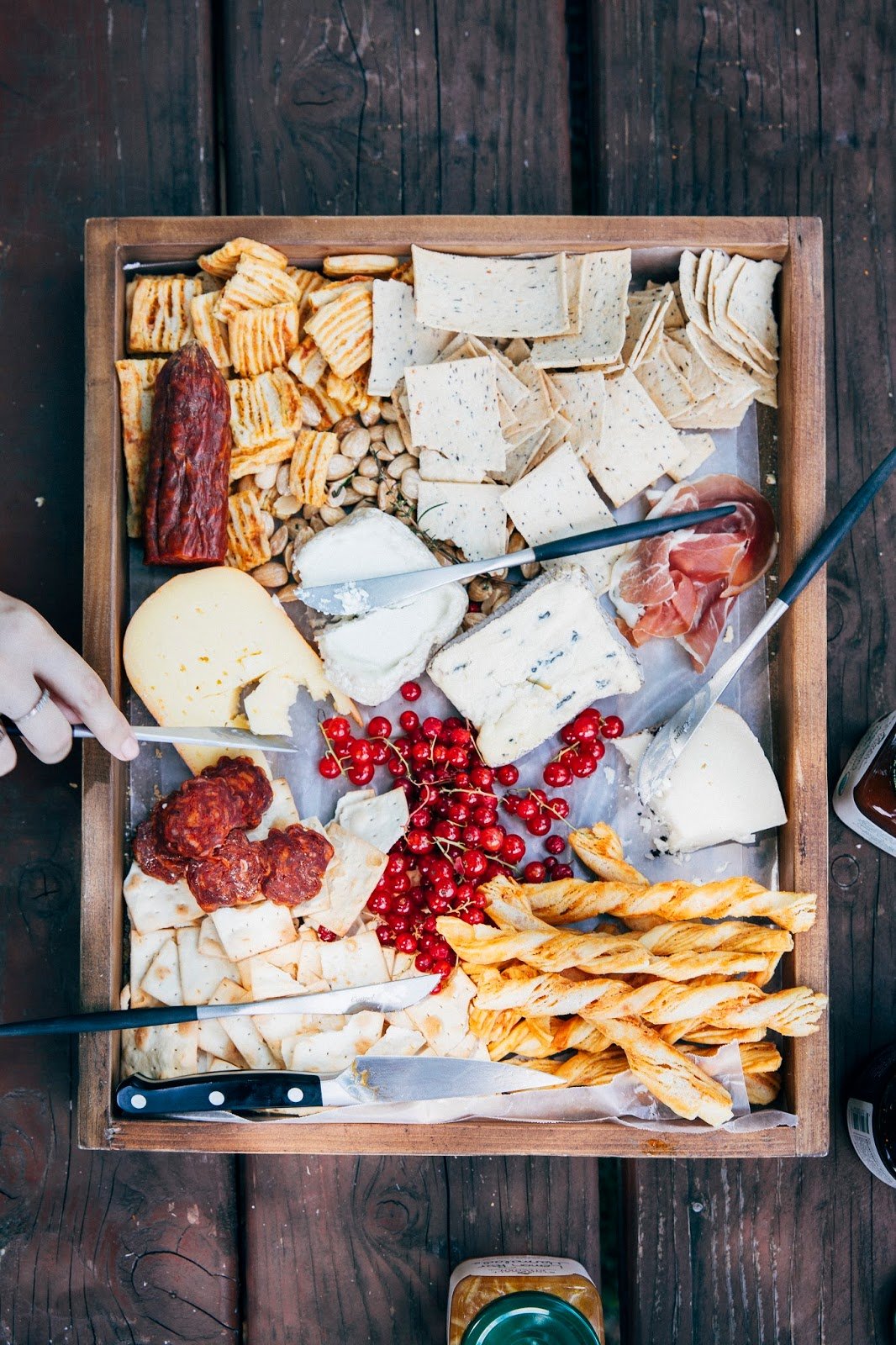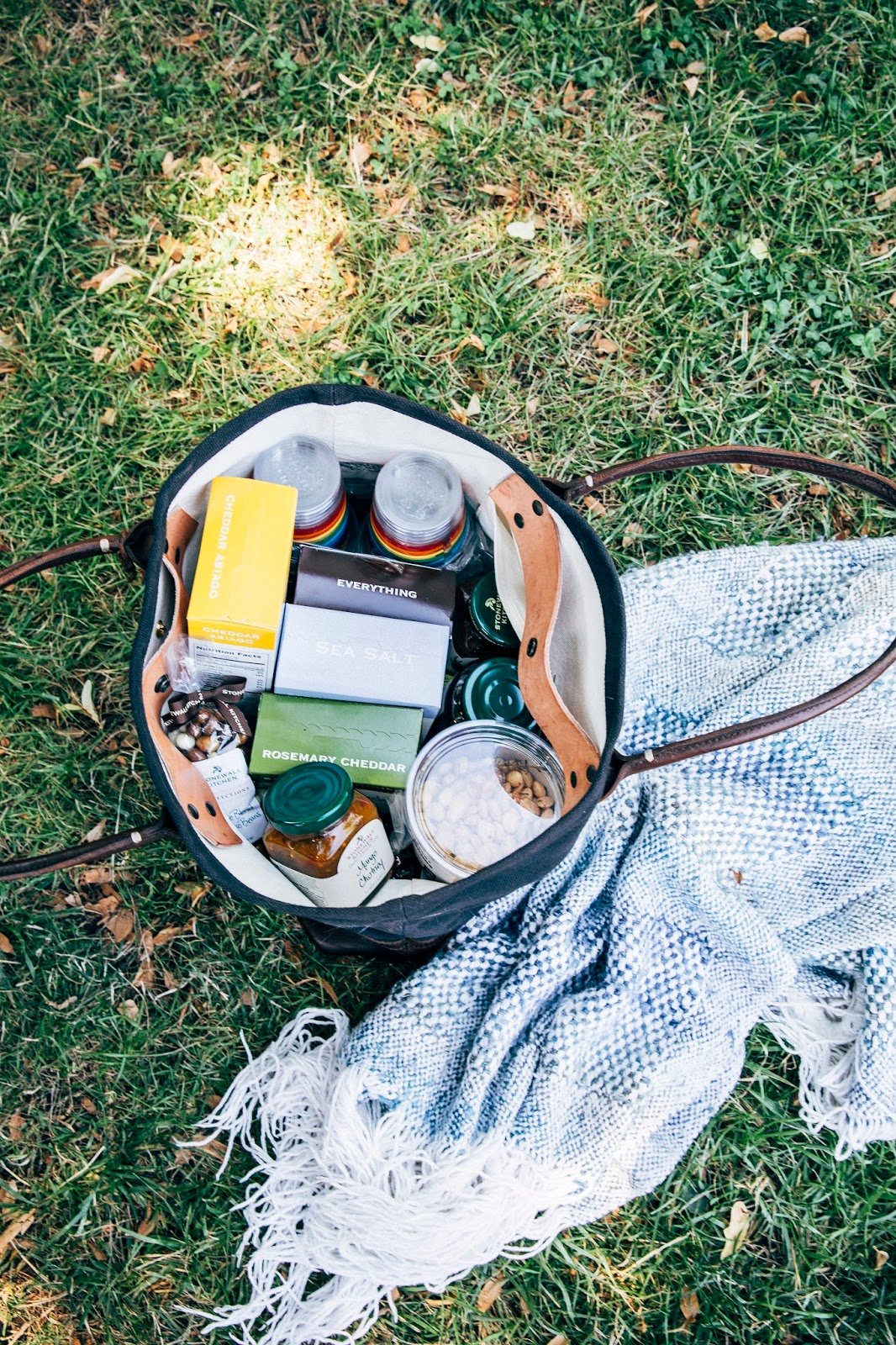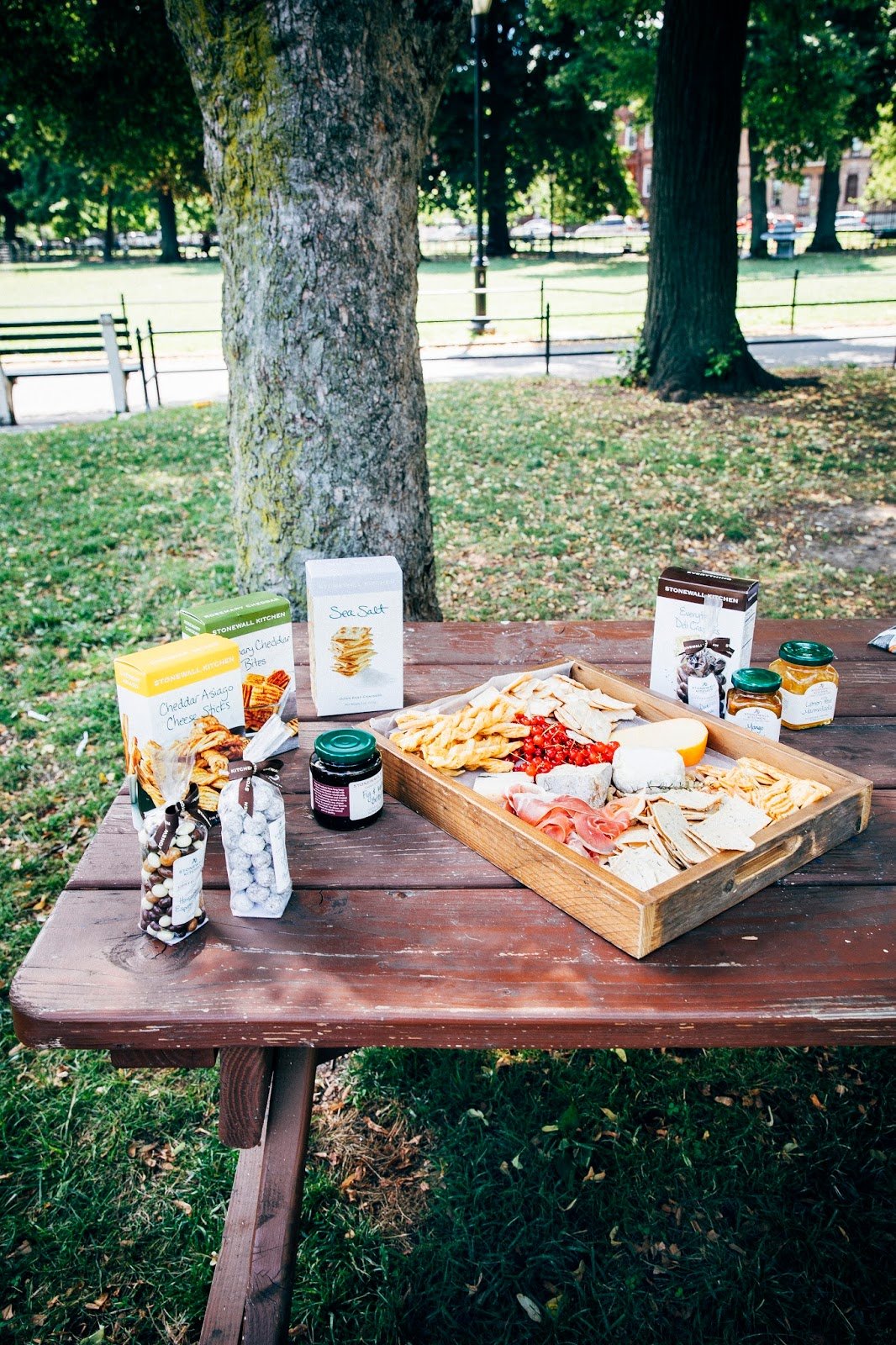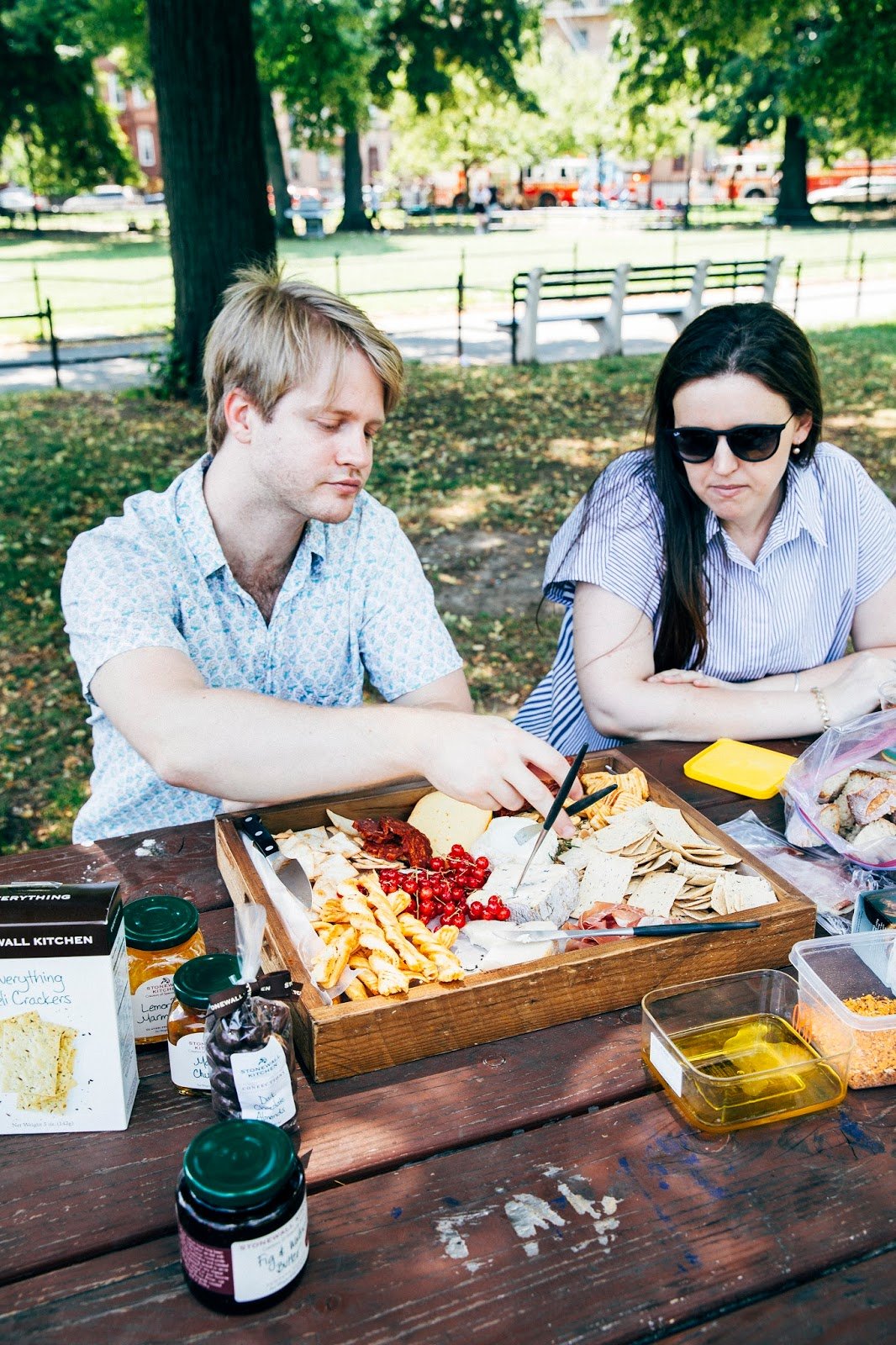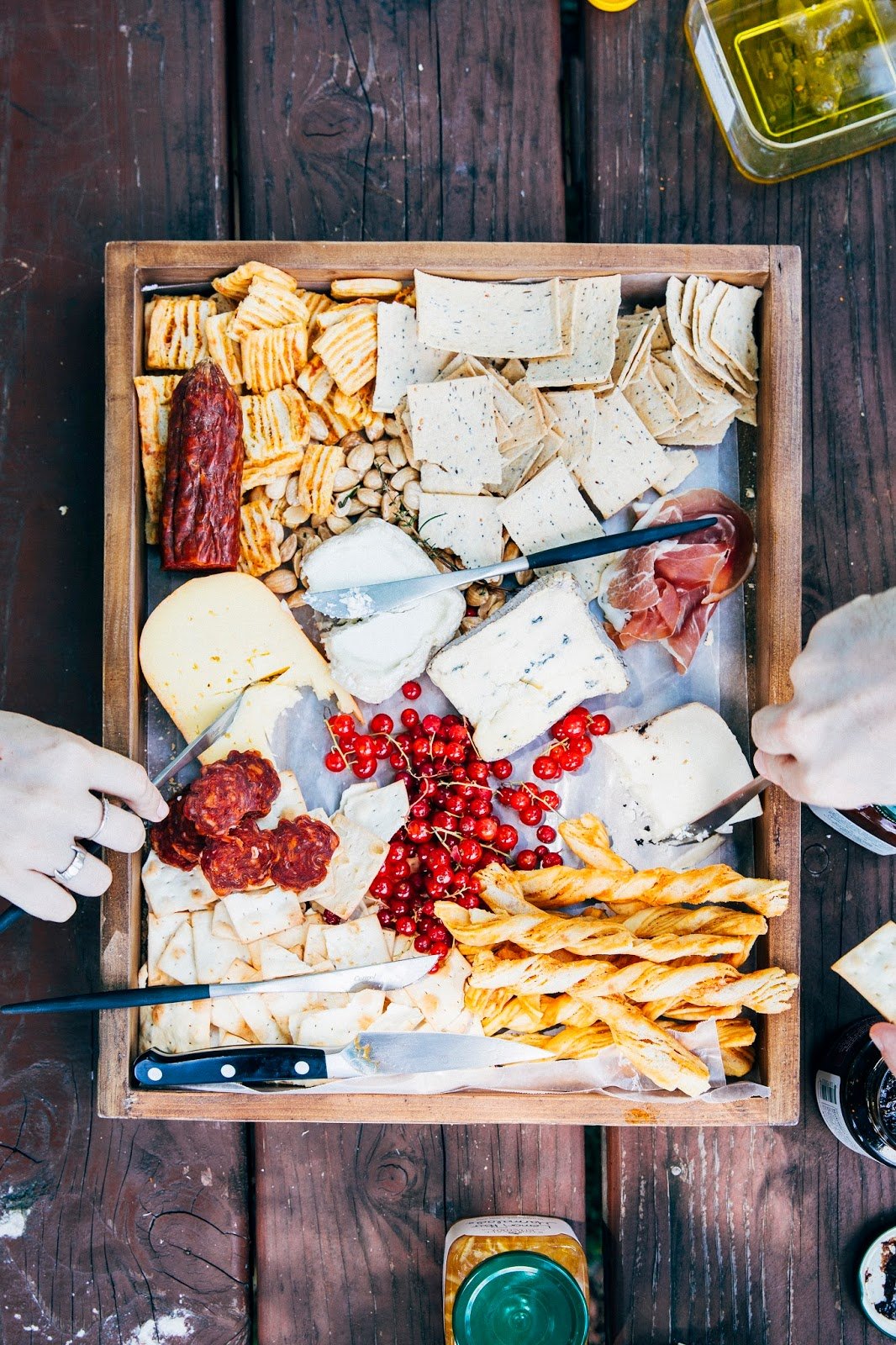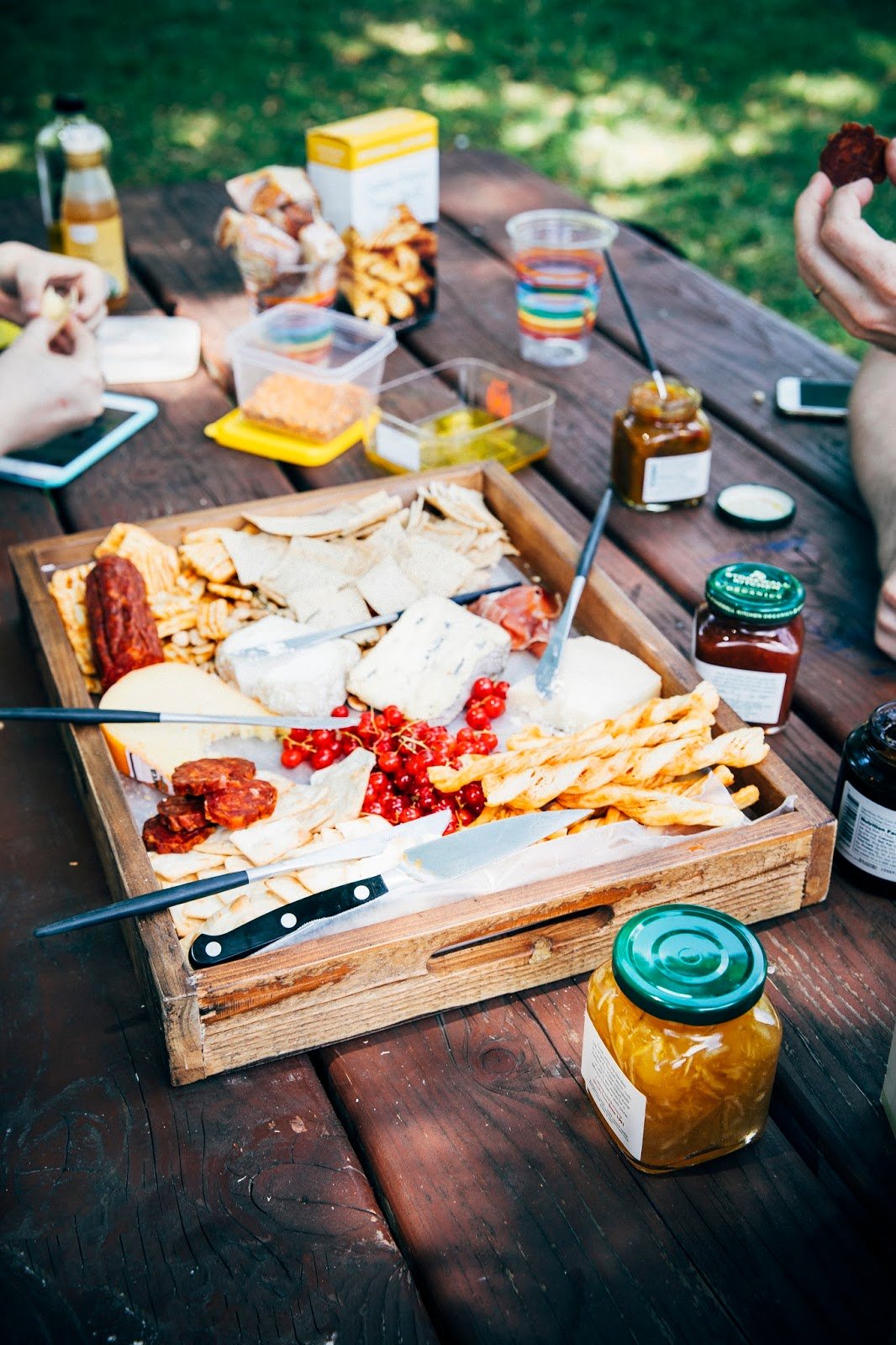a picnic cheeseboard
Remember Birthday Month, and how I was supposed to have a fancy picnic lunch at the William Vale rooftop garden? Well, that ended up not happening due to some pesky rain/personal drama/big life decisions (which I’ll tell you about soon, I promise, I promise). And then one of my Portland besties was in town, and my mom, so… here we are in July, celebrating with a very belated birthday picnic!
Erlend and I live just around the corner from Herbert Von King park, so we ended up calling some friends over one Sunday afternoon for a low key celebration with frozen sangria and a cheeseboard! I know there are a bazillion guides and tips for how to put together your own cheeseboard, but I figured I’d put together my own favorite tips and guidelines:
1. Talk to your cheesemonger!
Don’t know where to start? Talk to your local cheesemonger! It sounds scary and maybe a tad pretentious to do so, but literally every cheesemonger I’ve spoken to has been the friendliest and most knowledgeable person ever. Think of them as friends who just really, really love cheese. They are not there to judge — they are there to help you navigate and find the right kind of cheese if you happen to only like Kraft American singles, be lactose-intolerant, and/or only eat cheese aged in caves (believe it or not, I am friends with people who fall into these categories).
2. When in doubt, go for classic varieties.
For me, a great cheese plate has something for everybody. Ideally, there should be a soft cheese, a hard cheese, and a medium cheese. There should be mild cheeses for those with gentle palettes (think: brie, or a mild Gouda), and funky ones for those with more adventurous tastes (think: any kind of blue or smoked cheese). If you’re going for the extra credit, you can get a cheese made from sheep, cow, and/or goat. I like to start with a base of three made up of different textures/sources and go from there!
3. If you’re still confused, go for contrast.
A great cheese plate also offers complimentary textures and flavors that often contrast with cheese. I like to have salty charcuterie, super ripe and tart fruit, and a variety of crunchy crackers (like Stonewall Kitchen’s Sea Salt Crackers and Rosemary Cheddar Bites) to help balance out the fatty, soft cheese. And of course, jams and chutneys work wonderfully on every board! Pair deep and bold varieties (like Stonewall Kitchen’s Mango Chutney and Fig & Walnut Butter) with funkier cheeses, and tart and flavorful ones (like Stonewall Kitchen’s Lemon Pear Marmalade and Strawberry Vanilla Jam) with mild cheeses.
4. Keep the ingredients separate.
This is probably going to be the most controversial point on here, but here goes: separate all the ingredients to allow your guests to taste each item and pair them according to their tastes and preferences on their individual plates. Just because you happen to love Sour Cherry Jam (like I do), doesn’t mean your guests do too! As tempting and Instagrammable it may be, don’t pour or drizzle your cheeses with your chosen accompaniments. Plus, there might be some allergies in your party that you might not be aware of. Be the considerate hostess with the mostess.
5. Don’t take it too seriously; just do whatever you like.
It’s cheese. And jam. And crackers. You’re gonna be alright, no matter what!
This post was sponsored by Stonewall Kitchen, who provided the ingredients and the compensation to make the post happen. I genuinely believe that Stonewall Kitchen makes some of the best jams, jellies, and curds out there! As always, all thoughts and opinions are my own — thank you for supporting Hummingbird High and all my sponsors!

